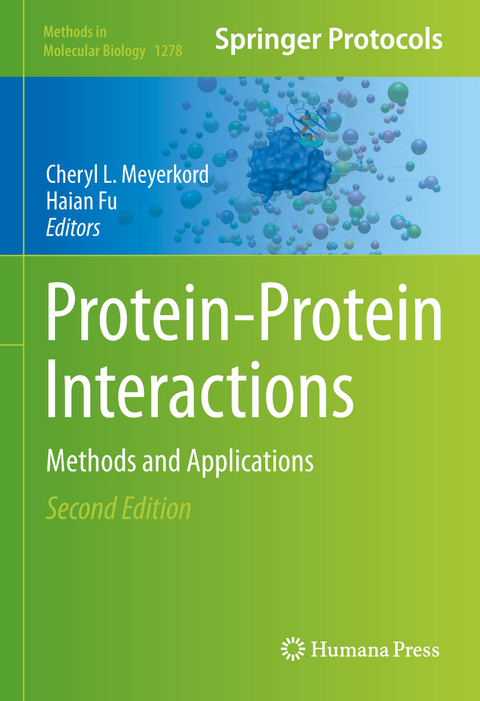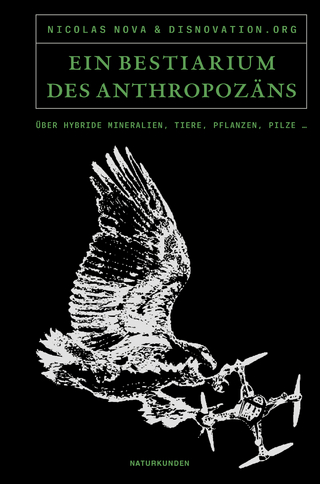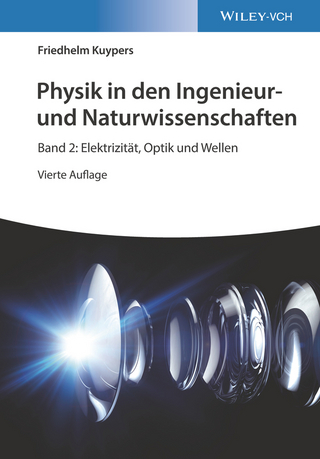
Protein-Protein Interactions
Humana Press Inc. (Verlag)
978-1-4939-2424-0 (ISBN)
Authoritative and cutting-edge, Protein-Protein Interactions: Methods and Applications, Second Edition is a valuable resource that will enable readers to elucidate the mechanisms of protein-protein interactions, determine the role of these interactions in diverse biological processes, and target protein-protein interactions for therapeutic discovery.
Structural basis of protein-protein interactions.- Quantitative analysis of protein-protein interactions.- Protein-protein interaction databases.- Computational prediction of protein-protein interactions.-- Structure-based computational approaches for small-molecule modulation of protein-protein interactions.- Targeting protein-protein interactions for drug discovery.- Studying protein-protein interactions using surface plasmon resonance.- Resonant waveguide grating for monitoring bimolecular interactions.- Quartz microbalance technology for probing biomolecular interactions.- Label-free kinetic analysis of an antibody-antigen interaction using biolayer interferometry.- Characterization of protein-protein interactions by isothermal titration calorimetry.- Sedimentation equilibrium studies.- Detecting protein-protein interactions by gel filtration chromatography.- Using light scattering to determine the stoichiometry of protein complexes.- Circular dichroism (CD) analyses of protein-protein interactions.- Protein-protein interaction analysis by nuclear magnetic resonance spectroscopy.- Quantitative protein analysis by mass spectrometry.- Using peptide arrays created by the SPOT method for defining protein-protein interactions.- Fluorescence polarization assay to quantify protein-protein interactions.- Förster resonance energy transfer (FRET) microscopy for monitoring biomolecular interactions.- Utilizing ELISA to monitor protein-protein interactions.- Glutathione-S-transferase (GST)-fusion based assays for studying protein-protein interactions.- Hexahistidine (6xHis) fusion-based assays for protein-protein interactions.- Studying protein-protein interactions via blot overlay/Far Western blot.- Co-immunoprecipitation from transfected cells.- In vivo protein cross-linking.- Identification of protein-protein interactions by standard Gal4p-based yeast two-hybrid screening.- Reverse two-hybrid techniques in the yeast Saccharomyces cerevisiae .-MAPPIT, a mammalian two-hybrid method for in-cell detection of protein-protein interactions.- Bioluminescence resonance energy transfer to detect protein-protein interactions in live cells.- Mapping biochemical networks with protein fragment complementation assays.- Detection of protein-protein interaction using bimolecular fluorescence complementation assay.- Split-luciferase complementation assay to detect channel-protein interactions in live cells.- Confocal microscopy for intracellular co-localization of proteins.- Fluorescence polarization assay to quantify protein-protein interactions in an HTS format.- Estrogen receptor alpha/co-activator interaction assay - TR-FRET.- High content screening biosensor assay to identify disruptors of p53-hDM2 protein-protein interactions.- Discovery of inhibitors of the MDM2-p53 protein-protein interaction.- Biophysical methods for identifying fragment-based inhibitors of protein-protein interactions.
| Reihe/Serie | Methods in Molecular Biology ; 1278 |
|---|---|
| Zusatzinfo | 70 Illustrations, color; 69 Illustrations, black and white; XV, 620 p. 139 illus., 70 illus. in color. |
| Verlagsort | Totowa, NJ |
| Sprache | englisch |
| Maße | 178 x 254 mm |
| Themenwelt | Naturwissenschaften ► Biologie ► Allgemeines / Lexika |
| Naturwissenschaften ► Biologie ► Biochemie | |
| Naturwissenschaften ► Biologie ► Mikrobiologie / Immunologie | |
| Schlagworte | cell-based bimolecular interaction • drug discovery • fluorophore labeling of test proteins • label-free biosensors and techniques • protein-protein interactions • quantitative and computational analysis • small molecule modulator identification • tag- and antibody-based methods • traditional radioisotope |
| ISBN-10 | 1-4939-2424-9 / 1493924249 |
| ISBN-13 | 978-1-4939-2424-0 / 9781493924240 |
| Zustand | Neuware |
| Haben Sie eine Frage zum Produkt? |
aus dem Bereich


